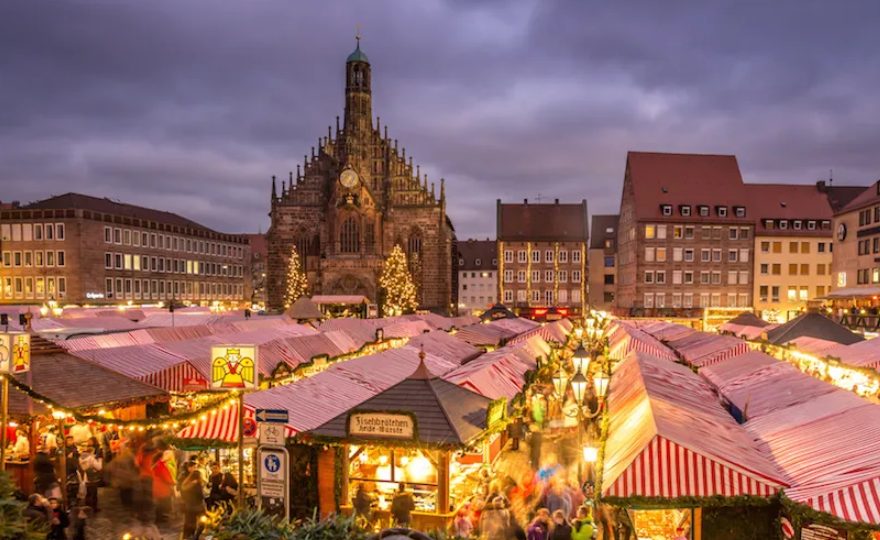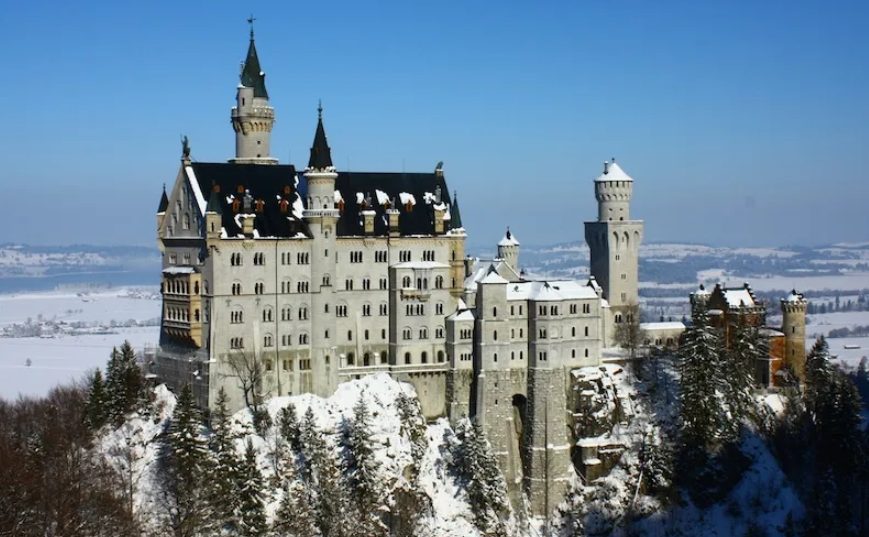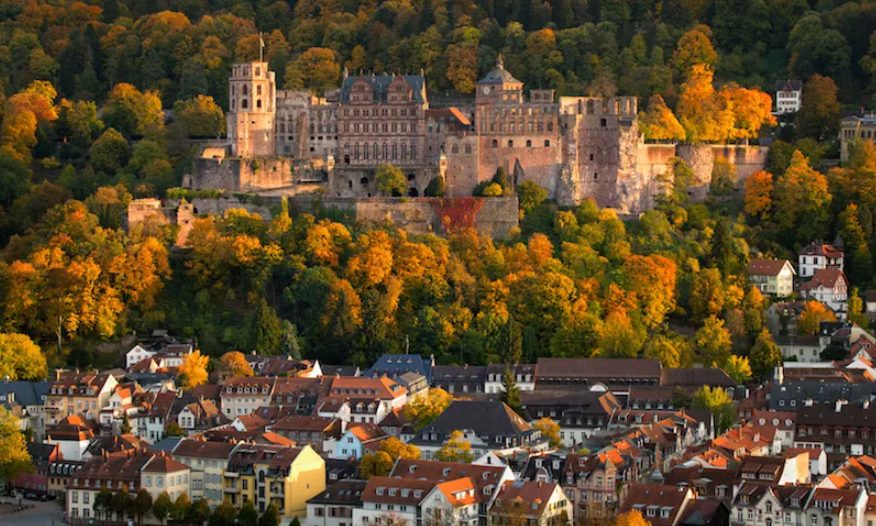1. Sanssouci Palace

In the heart of Sanssouci Park in the city of Potsdam, you’ll find the incredible New Palace, often referred to as Sanssouci Palace. Built in the 18th century under the commission of Frederick the Great, the palace is a beautiful example of baroque architecture and design. On a tour of Sanssouci Palace, you can see the opulent Grotto Hall, which was plastered with shells, marble and semi-precious stones, as well as an extensive art collection and an enormous rococo theater. While there, be sure to stroll through the gardens, which are meticulously cared for and serve as the perfect spot for a scenic picnic.
2. Monument to the Battle of the Nations

The city of Leipzig is an industrial hub and a cultural destination in Germany, but what it is best known for is the Völkerschlachtdenkmal, or the Monument to the Battle of the Nations. The monument, which is nearly 300 feet (91 meters) high, was erected at the 100th anniversary of the Battle of Leipzig. The Monument to the Battle of the Nations is stunning in its own right, but it also offers an amazing vantage point over the city. If you climb 500 steps to the top, you can look out over much of Leipzig and enjoy the view.
3. Nuremberg Christmas Market

There is no bad time to visit Germany, but there is something truly magical about visiting during the holidays. In November of each year, Nuremberg transforms into a winter wonderland thanks to its Christkindlesmarkt, or outdoor Christmas market. Among historic buildings and on cobblestone streets, you can shop for handcrafted wooden ornaments while sipping gluhwein, a warming spiced red wine sold by street vendors. If you get hungry while browsing the nearly 200 stalls, snack on the ubiquitous Drei im Weggla, or three sausages in a bread roll, and some lebkuchen, or traditional Nuremberg spiced gingerbread, for dessert.
4. Neuschwanstein Castle

Photo: Cesar I. Martins
If you’re a fan of fairy tales, then don’t leave Germany without seeing Neuschwanstein Castle in person. Located just outside of the town of Füssen in Bavaria, Schloss Neuschwanstein was commissioned by King Ludwig II in the 19th century. The final result was incredibly expensive, even for a Bavarian King, but there is no denying that the castle is stunning. In fact, Neuschwanstein Castle was used as the basis for Walt Disney’s famed castle at Disney World. Free bus rides bring visitors to the top of a giant hill for exterior views of the castle, and interior tours allow you to see the famed Hall of the Singers, the Throne Hall and the extensive art collections within.
5. Mount Zugspitze

If you’re after spectacular views, then nothing can compare to the vistas from the top of Mount Zugspitze. Located in the Wetterstein Mountains, Zugspitze is the tallest peak in the country and a popular spot for photography as well as outdoor recreation. In the winter, the mountain is ideal for skiing and snowboarding, and in the warmer month it is perfect for hiking. Three cable cars provide access to the mountain, letting you soak in panoramic views without the need for a strenuous uphill hike. The Zugspitze is located close to the border with Austria, and from the peak you can actually see into four different countries from a single viewing platform on a clear day.
6. Heidelberg Castle

The city of Heidelberg is a medieval history lover’s dream, and it boasts everything from the oldest university in Germany to remnants of the Bibliotheka Palatina, which was the nation’s first library. Perhaps the biggest attraction in the city, however, is the Heidelberg Castle. Construction started on the castle in the early 13th century, although plenty of additions were added in the centuries that followed. The castle was home to several kings and it has a tremendous heritage, but what makes it so exciting is simply the beautiful facade and the enormous size. Today, visitor’s can also see historical exhibits like the Upper Prince’s Fountain and the Goethe memorial tablet within Heidelberg Castle.
7. Reichstag

Visiting Berlin is a must for anyone in Germany. More than just the German capital, Berlin represents a part of the country that was divided in the 20th century into East and West. A unifying German landmark rich with political significance is the Reichstag, which is where the German Parliament meets. Originally constructed in the 19th century, the Reichstag underwent renovations in 1999 and now includes a spectacular dome made of glass. Visitors can enter the dome and take in amazing views of the capital city and even visit the political meeting rooms when parliament is not in session.
8. Brandenburg Gate

Another iconic landmark in Berlin is the Brandenburg Gate, which was once a 18th century city gate and now stands as a symbol of the city. The Brandenburg Gate is built in a neoclassical style, and was commissioned by a Prussian king as a symbol of peace. Despite damage during World War II, the gate still stands and is a reminder of peace throughout the city. While the Brandenburg Gate looks stunning during the day, it is illuminated at night for an even more spectacular appearance that should not be missed.
If you’re lucky enough to spend some time in Germany, be sure to add each of these eight famous landmarks to your travel itinerary to round out an unforgettable getaway.
Source: https://t24hs.com








